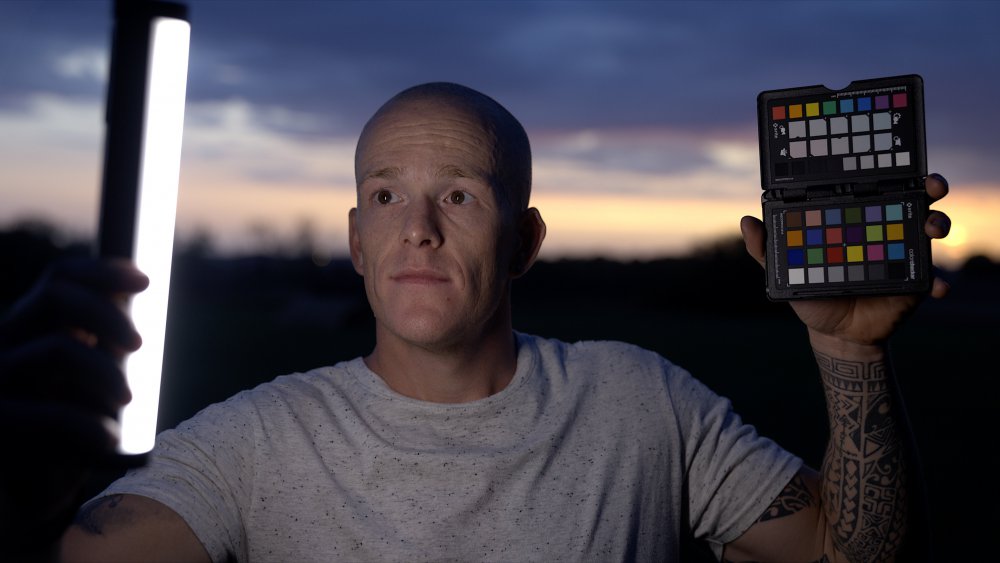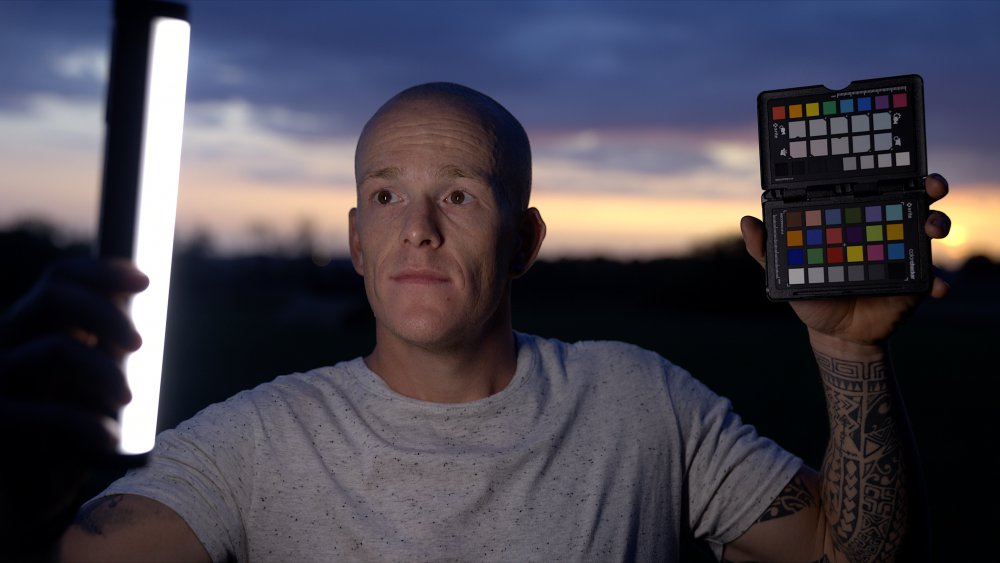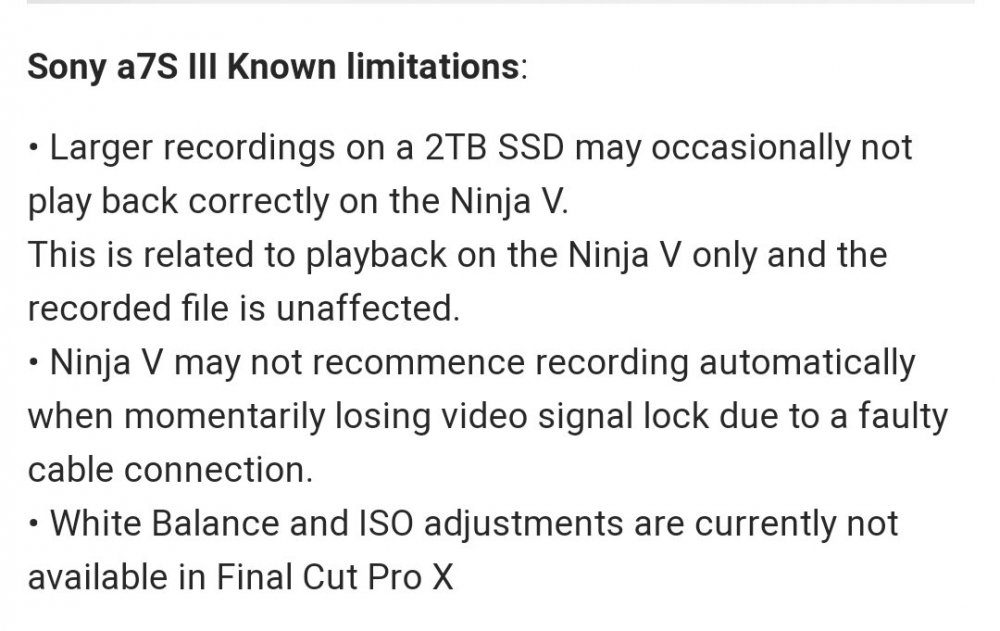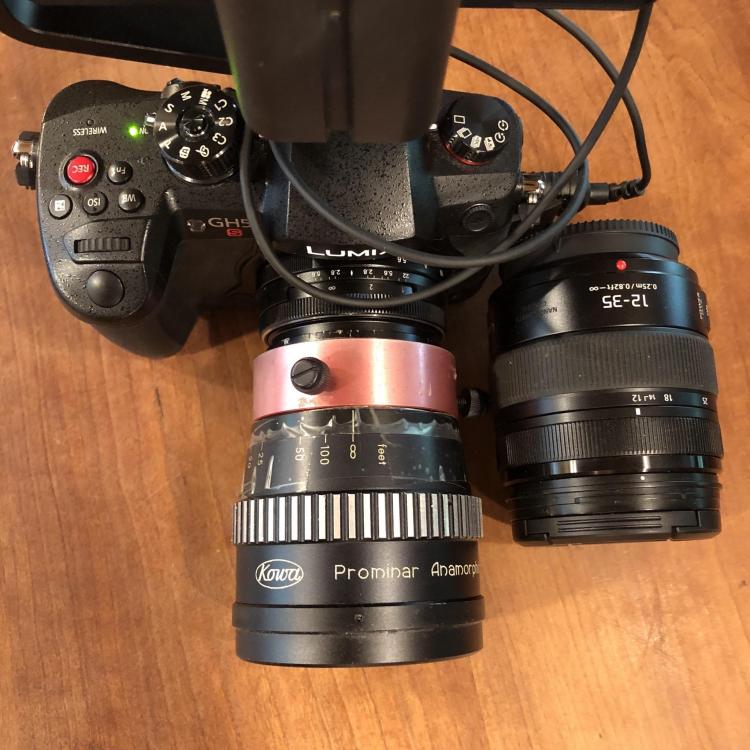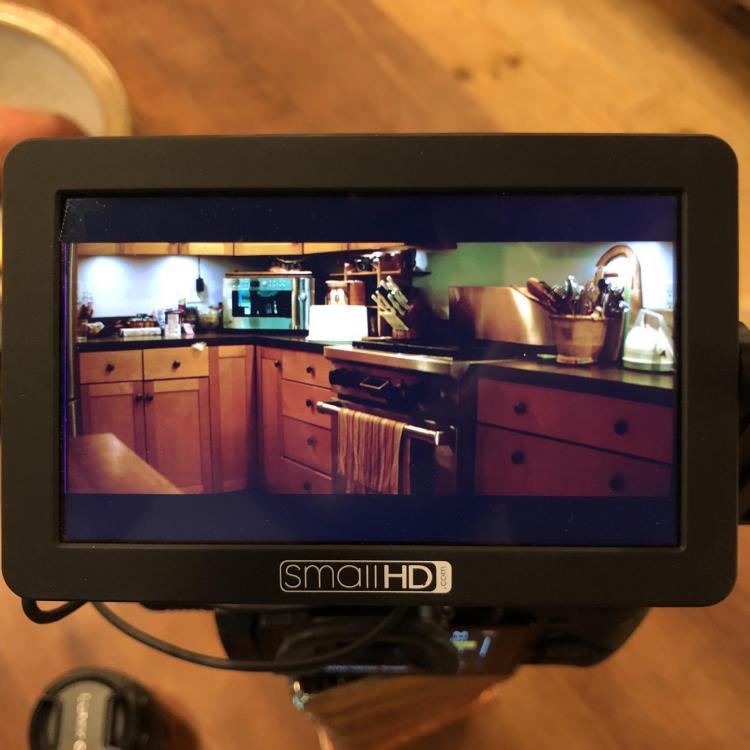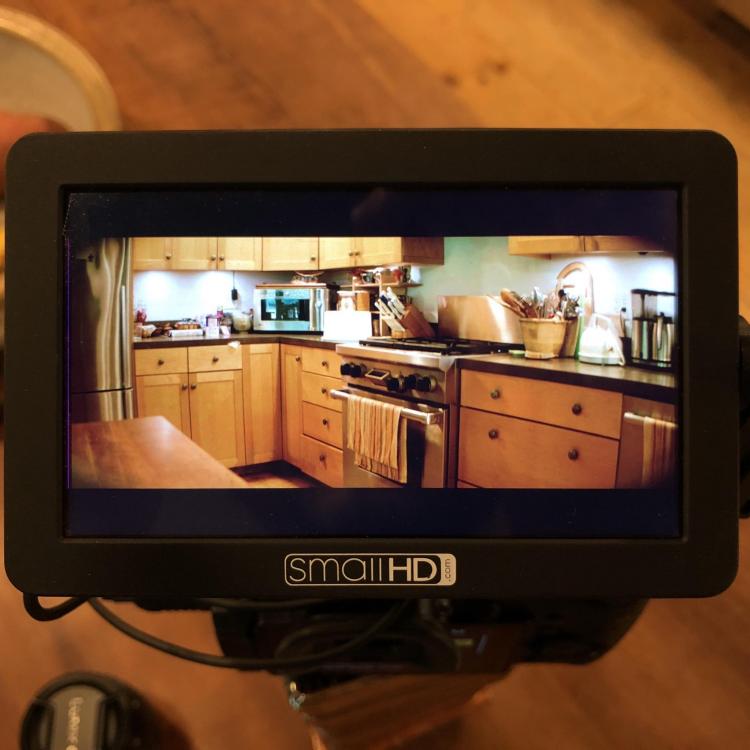Leaderboard
Popular Content
Showing content with the highest reputation on 09/17/2020 in all areas
-
I still have an em1mkiii and the three Pro prime lenses. It’s a buggy camera and I’ve had issues with it locking up on me. I’ve stopped using it for that reason. Hopefully firmware will solve those issues. I think Panasonic made a bad move going to full frame. They should have just embraced m43 and dominated the space and that in turn would help boost Olympus. With cameras like the XT3 being only $999 now I don’t see a point in the Oly anymore. The ibis and colors are great but low light is bad and video features are lackluster. Maybe we will see some firmware updates that will add more video features... but for the price... I don’t see why anyone would go for the EM1 anymore. Not to mention the EM1X. That camera is way too expensive. I don’t know... just my thoughts. Loved Olympus for a while. Still love them... but it’s starting to seem a little outdated at this point.3 points
-
I have consistently failed to make my own footage as good as I was hoping for, so have decided to try my hand at grading the best footage available, the sample shots from the manufacturers themselves. I've done this in the past but got sidetracked, but am now back on it. I figure that until I can make ARRI or RED footage look good, there's no point criticising my own footage - maybe the footage is fine and it's my grading skills that are solely to blame. My previous attempts, however short, made me realise a few things: flat ungraded footage from any camera looks dull there was a lot more noise in the RED and ARRI footage than I was expecting - ie, A LOT more Overall, the biggest surprise was how average the footage looked. Since then I've learned a bunch and hopefully will have more success. Anyone want to join me? Arri footage is here: https://www.arri.com/en/learn-help/learn-help-camera-system/camera-sample-footage RED footage is here: https://www.red.com/sample-r3d-files Komodo footage from Seth Dunlap is here: https://www.dropbox.com/sh/cfxdizrgt3aa4ml/AADPxF6XZIs2_uB7Xt_piHUya?dl=0 BM UMP 12K footage is here (underneath the "Generation 5 colour science" heading): https://www.blackmagicdesign.com/products/blackmagicursaminipro BM Pocket camera footage is here: https://www.blackmagicdesign.com/products/blackmagicpocketcinemacamera/gallery Sony Venice frames here: http://www.xdcam-user.com/tag/footage/ but I couldn't find any official footage for download I've downloaded footage from https://raw.film before too, so that might be worth checking out. As a reality check, I'm also pulling in the ML footage I've shot back when I was playing with it on my Canon 700D, and also the test shots I've been shooting with the BM Micro Cinema Camera. I suspect that the footage I shoot is much better than I think, and that I'm much worse at colour grading than I think. If anyone is interested in joining me that would be fun, and if there are other places to download well shot sample footage that would also be very interesting.2 points
-
There is an interesting post from cinematographer Steve Yedlin talking about this exact issue. As far as he's concerned, there is no unique 'look' to larger formats unless using a different format somehow forces you to set up your camera differently. https://www.yedlin.net/NerdyFilmTechStuff/MatchLensBlur.html He has some pretty rigorous testing to go with it.2 points
-
Panasonic EVA-2 Wish List
currensheldon and one other reacted to HockeyFan12 for a topic
Put a matte box in front of it. 😉2 points -

Panasonic EVA-2 Wish List
TheRenaissanceMan and one other reacted to Zak Forsman for a topic
That is not a minor quibble when it comes to our clients' confidence in us. We don't need any more hurdles (big or small) to doing our job and "selling" a client (who only knows enough to ask for a Red) on a different camera package gets old fast. If the EVA2 looked more like a baby Varicam, I would be very happy.2 points -

Sony A7S III
Snowfun and one other reacted to Trek of Joy for a topic
Tinkering with the raw files, no LUT, just basic exposure adjustments and balancing the RGB parade on the first, the second has a little more saturation. I'm a novice with grading and working on my skills. I've been told by others here I can't see good color because I like what's coming out of the a7s3, so if its shit, it is what it is, but I'm still buying the camera. Plenty of detail on the guy's face despite not being oversampled like the a73. Looking forward to my copy shipping. Cheers. Chris EDIT: colors pop more in my FCPx window than looking at this page on chrome.2 points -

Is full frame really necessary?
Rivhop and one other reacted to fuzzynormal for a topic
Sad day . To find out I’ve only been using parts of my images for years? Bummer.2 points -

Is full frame really necessary?
TheRenaissanceMan and one other reacted to SteveV4D for a topic
Thats odd as S35 cinema cameras cost a lot more than many fullframe hybrids.. and I'd rather have the money to buy a C300, a Red Komodo or an URSA 12k over a fullframe A7C, or any other fullframe hybrids for that matter... 😆😆2 points -
Sigma FP flip screen mod
Francisco Rios reacted to TiiPii for a topic
And here we go finally: https://item.taobao.com/item.htm?id=623177837309 Translated: https://translate.googleusercontent.com/translate_c?depth=1&pto=aue&rurl=translate.google.com&sl=auto&sp=nmt4&tl=en&u=https://item.taobao.com/item.htm%3Fid%3D623177837309&usg=ALkJrhgP-20-3JkCTJAzNEuR90UeUc7jUw1 point -

Is full frame really necessary?
tupp reacted to hyalinejim for a topic
I would say that this is very likely. It still sounds intriguing though 🙂 You misunderstood my proposed comparison though. The simulated crop on the 50 would simulate a notional sensor 1/4 the size of full frame. But I suspect that any differences observed would have more to do with the glass involved (and the necessary apertures) than the sensor size. Perhaps this is what accounts for your observation that the differences in rendering of DOF are greater when the disparity of sensor size is increased: to maintain equivalence, one lens is quite wide open and/or the other is quite stopped down.1 point -
1 point
-
S1H also have crop when shooting 4k60P.1 point
-
I feel like you are kind of moving the goalposts. This guy has a use case where he has shot hundreds of shots on cameras with all kinds of film backs (for camera comparisons), and somehow this does not count because his lenses are too wide? This is based on real-world experience with everything from an IMAX down to a super 35 camera. He even admits in the article that his matching is not perfect due to practical limitations (t-stops and f-stops not aligning, lenses not matching exactly to their equivalent counterparts, etc.), but his argument is that the likeness between shots is so convincing and consistent that the sensor size obviously does not play a role in the actual image, and that any perceived difference is due to bias or particular (non image circle-related) lens characteristics, not due to the size of the film back. In fact, where you have been previously arguing about recognizing a larger format due to increased lens blur (in your examples where you are circling a number of shots), the Alexa 65 actually seems to have slightly LESS lens blur in the examples provided by Steve Yedlin, likely due to my aforementioned reasons. This, again, seems to provide an argument that any perceived differences are more likely to be due to individual lens characteristiscs or other uncontrolled variables which are not related to the film back size. EDIT: I hope this does not come off as argumentative, as I do appreciate -and enjoy- the discussion!1 point
-
Is full frame really necessary?
tupp reacted to Mark Romero 2 for a topic
Late to the conversation here and haven't read all the replies. I moved from my crop-sensor a6500 to a full frame Panasonic S1 for the better low light ability / increased dynamic range, and for the 10-bit 4:2:2 codec. But that is because I shoot real estate and have to deal with ambient lighting. When shooting real estate videos, there often isn't time (or a budget) to set up lighting. So I often have a COUPLE of shots per video which are at the ISO 1600 to 3200 range. Other times I am dealing with extreme levels of dynamic range. The S1 does pretty well in these situations. Far better than the a6500.1 point -
Thanks for the link! I doubt that he is talking about this exact issue. Like most other folks who do equivalency tests, he likely limits his attention to mathematical DOF, and his tests use wider angle lenses and there is no delineation of the front and rear DOF limits with a lot of other detail thrown away or ignored. I don't have time right now to read the linked page, but if the images shown are the extent of his comparison, his tests are invalid. He does not show how the limits of DOF are delineated. He seems to be using wide angles focal lengths, and I can see a difference in one of the images with just a glance.1 point
-

Is full frame really necessary?
tupp reacted to hyalinejim for a topic
Well, you've convinced me that there's something worth considering there for sure. I had always conceived of the equivalence debates as being along the lines of flat-earthers etc 🤣 But now I see that for some it's just about a level of complexity and possibly even bokeh connosseurship. For my purposes, these differences are so rarefied as to be irrelevant. However, the idea of testing for them is interesting. How about a test where you simulate a small sensor by using a center crop from a full frame stills camera? Like this: Full frame 200mm, f7.1 Simulated 4x crop sensor 50mm, f1.8 These would be different lenses. I could do this (when I have time) with a Canon 50 1.8 and Sigma 70-200 f2.8 and use ACR to correct for lens aberrations. Or instead with an OM Zuiko 50 1.8 and OM Zuiko 200mm f4 (possibly similar primes? But can't correct for aberrations) Would 4x be enough to show a difference? I realise you're dealing with a lower megapixel image from the central portion of a wide open lens for the simulated 4x so the image will be softer. Would these variables make the test invalid?1 point -

Is full frame really necessary?
hyalinejim reacted to tupp for a topic
The quotation marks that I employed imply something else. I'm saying that refractive optical elements can affect focus and the focus range, and, additionally, that there are general tendencies, advantages and problems inherent in refractive optics designed for larger formats and likewise with refractive optics designed for smaller formats. Of course, there are exceptions and some lenses for smaller formats possess some of the qualities generally found in larger format lenses, and vice versa. There is consistency, but there is also seems to be more than one variable at play, so there is some complexity. I would describe the look of larger formats as generally having a flatter and more "solid" focus plane with a faster "rolloff" at the DOF limits, but with a smoother and better resolved "macro-contrast" outside of the DOF limits. There is not a huge difference between FF and M4/3. Using a speedbooster or focal reducer can allow the qualities of the larger format optics to be captured on a smaller format. The dramatic discrepancies between the two images shown above are not due to any tendencies inherent in different sized formats. My guess is that the DOF was not equivalently matched, plus the 1-inch camera likely had a built-in zoom lens (which can look/behave different than a prime) and excessive in-camera sharpening could have been enabled. There are a lot of variables that need to be controlled in such comparisons, otherwise the tests are invalid.1 point -
PSA: Meke 28mm f2.8
jackch2n reacted to Caleb Genheimer for a topic
Hey all! I’ve been doing some soul searching lately... they say the camera lens is the window to the soul, right? Anyway, seeing as my current cameras both have multi-aspect micro four thirds sensors (GH5S and Pocket 4K), I’ve been planning to update my taking lenses for anamorphic. I use a Kowa 16-H which is fantastic, and the SLR Magic Rangefinder, which works well in most cases. I messed around some with old primes that I have kicking about, and determined that the right 28mm lens just MIGHT squeak by in anamorphic mode on the GH5S, and would probably work perfect on the Pocket. I was also after a native mount pancake, because let’s be honest. On gimbals, the typically long and front-heavy anamorphic setups just don’t work well. I have a Ronin M (not a small gimbal by 2019 standards), and I have to add a lot of ballast to BARELY make the Kowa work. The gimbal strains hard and can’t tilt to vertical. Well, a short google later, and I ordered a Meke 28mm pancake on Amazon. What the heck, it’s really cheap, doesn’t hurt to try it right? Well, it just showed up, and it works PERFECT. If you have a Kowa 16-H/8Z, I highly recommend snagging one of these. As with anything on the wide end, it vignettes pretty hard with the Rangefinder mounted, but with just the Kowa, it’s clean as a whistle (cropped to 2.39 of course.) This will be my new go-to for gimbal work and for wide establishing shots. I have yet to test it on faces, but it’s probably perfect for that near fisheye mumpy up close look. If I get in a tight corner, I’ll be relieved to have this (literally) in my back pocket. My only gripe is that they don’t also have a 35mm/40mm/50mm pancake set, because a range of pancakes this small would be gamechanging for anamorphic adapter users. I never thought I’d have a Kowa setup as small as this. It’s crazy. Until a new anamorphic beats the Kowa for width and quality, I’m sticking with it.1 point -
Grading footage from the best cameras in the world (RED, ARRI, BM, etc)
PannySVHS reacted to zerocool22 for a topic
That footage from Arri is pretty horrible though, some cows in a field vs RED has some pretty good stuff on there.1 point -
Probably not.. but it is a camera designed to do both regardless of how you rig it. Like my GH5 rigged to a gimbal is still a hybrid designed for a Photographer to use. But no one would shoot photos that way. At least, I hope not. 😆1 point
-

Is full frame really necessary?
tupp reacted to hyalinejim for a topic
This implies that you maintain that there is a look inherent to a format, independent of variations between lenses. If so, it should be consistent as format size changes and it should be describable. How does the look of small format compare to the look of a larger format, at equivalent focal lengths and apertures? I'm just interested here, as I use DOF calculators to help my understanding when moving between FF, micro 4/3 and speedboosted micro 4/3. But I also see a huge difference in the images posted, which I would not have expected.1 point -
IMHO the problem is that Sony isn't using specialised image sensors for this, and trying to expect cinema quality video from it. They should have used 1/1.33 sensors with a 12MP sensor count on this, and much better HDR algorithms. All the sensors should have been the same or similar sized, to ensure similar dynamic range and processing. So much great software limited by the hardware. They should have aimed to beat the iPhone 11 at dynamic range and image quality, and by a noticeable margin. This doesn't beat that, or come close.1 point
-
Oddly enough no. My main point is that smaller sensors can cost more than fullframe. Having more money doesn't necessary equate choosing fullframe. Its as much down to personal choice of what you need or want to use - hybrids, smaller cameras, larger cinema cameras. I wouldn't buy a Sony as I've never liked using or editing their footage. And to be honest, I don't shoot enough photos to need a camera that does both. Maybe one fullframe I am thinking about to cover those small jobs where I do. Mostly though, I want to stick to dedicated video cameras.1 point
-

Is full frame really necessary?
tupp reacted to hyalinejim for a topic
I certainly can see what you're talking about in the areas you've highlighted. It's very clear. But if you plug equivalent settings into a DOF calculator you get the same amount of DOF for both, according to the calculator. This is the theory, and it depends on certain assumptions regarding circle of confusion that I won't pretend I understand in depth. So is it fair to say that your position is something like this: "Even though DOF calculators show that the theoretical DOF of equivalent shots is the same, in practice there is an observable difference in how DOF is rendered between equivalent shots"? If so, and if I understand you correctly, that would mean that a DOF calculator is showing us 2 points on the DOF continuum, the point of near focus and the point of far focus, and these are the same for both formats if the focal length and aperture is equivalent. But it's not telling us anything about the DOF characteristics elsewhere on the continuum, which is noticeably different. That's certainly very interesting and worth investigating. I think for most people it's enough to know that they can match the field of view precisely using equivalence theory, and that the DOF is "the same" according to its assumptions. But others may notice and be very interested in differences in DOF behaviour that's not described by equivalence theory... if what you say is true! So we would be talking about a kind of DOF rolloff, which is shorter on larger formats and longer on small formats, according to equivalence sceptics. Is this understanding correct @tupp?1 point -
Whether you like this camera or not, or will buy one or not ... you still have to appreciate that for $2000 it blows away an $8000 Leica M. No, it’s not built like a tank and doesn’t have that “jewel” elegance. But for those wanting a rangefinder-ish experience and a relatively inexpensive camera they can always have with them, it’s still a pretty cool camera. It won’t replace my other a7’s but I’ll probably get one. Life is too short to bitch about everything. Have some fun once in a while. If it’s such an awful camera like many are implying then it’s not going to put Fuji or Panasonic out of business, is it?1 point
-

Panasonic EVA-2 Wish List
TheRenaissanceMan reacted to Zak Forsman for a topic
Dear Panasonic, I would buy this L-mount, FF, 4K 120fps, EVA2 in a heartbeat. Signed, a former EVA1 owner that is getting by with two S1H bodies at the moment.1 point -
Fair enough. I guess a lot of us were on the fence, wrt assuming whether the GH6 was coming or not. Panasonic could solely be blamed, due to the deafening silence, and pushing 4 Full Frame models, without a word on the GH6. Now that they have said, categorically, that the GH6 is definitely not abandoned, we should convince ourselves to believe them. Even if Olympus wasn't as believable. Maybe the GH6 will usher in the next generation of autofocus, that Panasonic so badly needs. Along with a few other features.1 point
-
Maybe it's just marketing. The FF enthusiasts / myopians will look at this and have their confirmation bias renewed and will be left with the impression that Panasonic understands them, sees FF as being the superior sensor size ordained directly by God, and that Panasonic is the brand to get. The MFT enthusiasts will look at this, be encouraged by the frame-rates and remember the track record of the GH line, and hold their opinions for when we see the IQ. Then the GH6 can be released and the MFT enthusiasts will see that the IQ is excellent. The FF myopians won't even look at "toy camera" reviews and will be none the wiser. ....and everyone gets what they want and Panasonic lived happily ever after. *roll credits*1 point
-
To test this you could use: standard 16mm, Bolex (Kern Paillard 10mm at f/1.8 4/3rds, 17mm at f/3.2 APS-C (Nikon DX), 22mm at f/4 Full Frame, 34mm at f/6.3 8x10, 256mm at f/45 The 16mm would have to be wide open and the 8x10 would have to be completely stopped down (my 8x10 270mm is f/4.4 - 45) This is according to this calculator: https://www.pointsinfocus.com/tools/depth-of-field-and-equivalent-lens-calculator/#{"c":[{"f":13,"av":"8","fl":50,"d":3048,"cm":"0"}],"m":0} Damn it you’ve got me doing it now! Like Oliver Hardy and his taxi driver getting involved in Stan Laurel’s jigsaw puzzle, and they miss his wedding ceremony…1 point
-
The differences are quite minor to the point of it proves theory and practice match to me, even in my crappy comparison between a more than 35 year old FF prime and a much more modern 1 inch sensor zoom. That you can not seem to understand that tells me you have visited that river and drunk from it way too many times! Unless you CAN post proof that to setups to match exactly will not give the "same" photo, there really IS no purpose in continuing and if you do want to post more, just imagine me posting a reply that says I disagree. Thank you.1 point
-

Sony A7C - harms the camera industry
MicahMahaffey reacted to Oliver Daniel for a topic
From the people who brought you the blockbuster A7SIII. This fall, the A7III is back! But smaller. Not mightier! Just smaller. And flippy. Not floppy. Sell a kidney. Buy tickets now. Sponsored by Squarespace.1 point -

Sony A7C - harms the camera industry
MicahMahaffey reacted to Andrew Reid for a topic
Of course. It should be a free market. There's anti-trust laws against collaborative market fixing and segmentation, nobody wants cartel behaviour. But what's going on here is not a balance and it's not even really a free market. It is a destructive race to demolish other Japanese camera companies, and Canon / Sony are the number one suspects. A race to appeal to the masses at the same time as significantly raising margins and pricing the average consumer out. A race to lock-in customers to specific lens mounts, and charge extortionate money for optics. If the consumer could freely choose more innovative products, and more countries and more diversification and more niches were catered for, then it'd truly be a free market. It's about less diversity, less competition, this isn't a win for us. If Sony and Canon succeed in killing Panasonic, Nikon, Fuji, Olympus, Pentax and even Sigma's fledgling full frame camera business, a duopoly will be created like AMD vs Intel. Personally I don't want this. I don't want a camera as dull as the A7C to kill APS-C Fuji X-Pro sales. Fuji X-T4 and X-Pro 3 offer so much more innovation than the A7C. They are strangling themselves. The camera range the A7C kills is the A6000 series. By using the A6600 form factor for the A7C, Sony is sending a message. That range is going full frame, more expensive, higher margins. But no new specs because they have to maintain the high margins. Same specs as the old camera (A7 III). Little investment in it, not even in new menus (crazy). Sure I am all for the concept of small, full frame, compact mirrorless cameras. Look at the Sony RX1R II. So much more innovative than the A7C. Look at Sigma Fp. Making an interchangeable lens high-end RX1R II with pop-up EVF is one thing. Slapping a bigger sensor in an A6600 and calling it quits, just to kill off other Japanese manufacturer sales, is quite another. And the prices of the Sony lenses is quite self defeating. But it is the soulless clinical blandness that bothers me the most. In this industry... Do we really want to end up with a dominant Sony and their soulless shooting experience, boring ergonomics, and Canon with their marketing games? Just those two? Rather than do something genuinely interesting in the APS-C market like Fuji has done with their rangefinder style mirrorless cameras, Sony has simply slapped a full frame sensor in one of the most unergonomic and boring bodies, it's the most unimaginative, most risk averse way to kill the crop sensor market I've ever seen. Customers will likely buy it instead of an X-Pro 3 or X-E3, because hey it's full frame and Tony Northrup likes it.1 point -
Okay - I know this post is going to be unpopular to a certain extent, but here goes - I'd love to invest in a cinema camera. At the moment I make my living using mirrorless cameras. The possibilities for improving my creative options and technical quality really excite me. Add to that the convenience of having integrated features like internal ND and XLR sockets, and I would be a very happy customer. However, there is another important factor motivating me to fork out, what for me would be a major amount of money - it's that sinking feeling I see from new clients when they've hired a filmmaker and I pull out a camera similar to the one they take with them on holiday. Impressions count, and if I do spend thousands on a piece of equipment, I'd really like it to look like an impressive bit of kit. The original EVA1 (which I've rented plenty of times, and really enjoy using) has serious styling problems. It resembles a 90's camcorder, and not in a cool, retro way. It might sound superficial, but that, and the build-quality problems at launch (wonky handle), really put me off buying one. I have some other minor feature requests, but that is the number one thing that stands in the way of me actually purchasing a similar release.1 point
-

Panasonic EVA-2 Wish List
63degreesnorth reacted to IronFilm for a topic
Just give plenty of SDI outputs, with full individual control over each, and let people use their own preferred monitors.1 point -

RED KOMODO 6K | First Footage - WOW
Video Hummus reacted to Juan Melara for a topic
Got my hands on Red Komodo to test for a few days. I'm impressed. A few more images can be seen here: https://imgur.com/a/HAWFShe1 point -
FF gives me cheap wide angles and cheap entry into all focal lengths. Nuff said. Thank you for dropping the wisdom. Spend money on camera body, save money on lenses, if AF does not matter. Just the thought of putting a 28mm or a 50mm Canon FD on my S1 makes my heart rush. Beautiful! Now, Panasonic, give your beautiful Lumix S1 a free 10bit VLOG update, 10bit 4k60p included. Put out a paid update for 10bit 120fps HD and your ALL Intra Codec for 799 EU and S1, S5 and S1H will coexist and all become megasellers. S2H, SDI and internal NDs for 4499EU in 2022.:) So, FF is great.1 point
-
You must have a very large penis.-1 points



